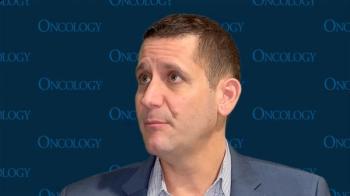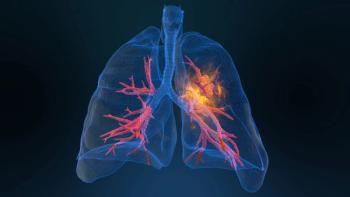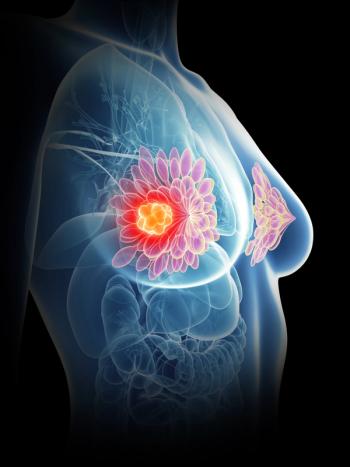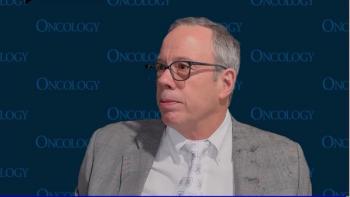
Treatment De-Escalation With Locoregional Radiotherapy Appears Safe in cT1-2N1 Breast Cancer
A promising 5-year locoregional recurrence rate highlighted that it is likely safety to de-escalate treatment with locoregional radiotherapy in a population of patients with cT1 to cT2, node-positive breast cancer that has been treated using primary chemotherapy and surgery.
Investigators believe that locoregional radiotherapy can be safely de-escalated among patients with cT1 to cT2, node-positive (N1) breast cancer who have been treated with primary chemotherapy and axillary lymph node dissection (ALND) or other surgery of the breast/axilla based on a promising 5-year locoregional recurrence rate reported from the RAPCHEM trial (NCT01279304).
In particular, the 5-year locoregional recurrence rate was 2.2% (95% CI, 1.4%-3.4%) in the overall patient population, and was 2.1% (95% CI, 0.9%-4.3%), 2.2% (95% CI, 1.0%-4.1%), and 2.3% (95% CI, 0.8%-5.5%) in the low-, intermediate-, and high-risk populations, respectively. Provided that study guidelines were followed, locoregional recurrence rates in the low-, intermediate-, and high-risk cohorts were, 2.3% (95% CI, 0.8%-5.3%), 1.0% (95% CI, 0.2%-3.4%), and 1.4% (95% CI, 0.3%-4.5%), respectively.
“Based on the results of this study with [patients who have cT1-cT2/N1 breast cancer and were] treated with primary chemotherapy, it seems oncologically safe to de-escalate locoregional radiotherapy based on ypN status following ALND. This study supports the hypothesis that locoregional radiotherapy can be omitted in selected patients in whom ALND is performed,” the investigators wrote. “Randomized controlled trials are needed to further evaluate the effect of de-escalation on disease-free survival and overall survival [OS], both for patients in whom ALND is performed, and for patients in whom ALND is omitted.”
The study population consisted of patients with invasive breast cancer who had been treated with at least 3 cycles of primary chemotherapy and underwent breast/axilla surgery, if able. To enroll, patients were required to have confirmed metastases in at least 1 lymph node. Those with 4 or more suspicious lymph nodes before primary chemotherapy, distant metastases, or irradical surgery of the primary tumor were not able to enroll.
Strategy was based on Dutch guidelines and included between 6 to 8 cycles of chemotherapy followed by surgery. Guidelines further detailed that risk categorization was based on ypN status, with ypN0 being low risk; ypN1, or 1 to 3 positive nodes, being intermediate; and ypN2/3, or 4 or more positive nodes, being at high risk of locoregional recurrence. Radiotherapy was administered at a dose of 25 fractions of 2 Gy plus or minus a boost.
The study’s primary end point was 5-year locoregional recurrence rate, with secondary end points including 10-year locoregional recurrence rate; recurrence-free interval at 5, 10, and 15 years; and overall survival at 5, 10, and 15 years.
In total, 838 patients were including in the 5-year follow-up analysis, of whom 291 were in the low-risk cohort, 370 were in the intermediate-risk cohort, and 177 were in the high-risk cohort. The median patient age was 49 years (interquartile range, 43-57). All patients received mammography and breast/axilla ultrasound in keeping with the Dutch guidelines. Moreover, 87% of patients were given a breast MRI. In terms of chemotherapy treatment, 16% of patients were treated with anthracyclines, 7% with taxanes, and 76% received both. Additionally, all patients received a minimum of 3 cycles of chemotherapy, 91% received at least 6 cycles, and 83% received radiation therapy.
The median follow-up was 5.8 years for disease recurrence and 6.8 years for vital status. In the overall population, 2% of patients had locoregional recurrence as a first event, 3% had locoregional recurrence with synchronous distant metastases, and 8% had distant metastases. In total, 8% of patients died due to breast cancer or other causes.
Other data indicated that less or more locoregional radiotherapy vs what was recommended by the study guidelines did not significantly impact the locoregional recurrence rate across each risk group. The 5-year OS rate was 92.2% (95% CI, 90.2%-93.8%) and the 5-year recurrence-free interval was 86.4% (95% CI, 83.9%-88.6%). Recurrence-free interval within the ALND group was 85.2% (95% CI, 82.3%-87.7%) compared with 91.7% (95% CI, 86.1%-95.1%; P = .032) in the non-ALND group. The high-risk ALND cohort had a recurrence-free interval of 69.3% (95% CI, 82.0%-95.1%) compared with 93.8% (95% CI, 82.0%-98.0%) in the non-ALND cohort (P = .032); 5-year OS findings were similar.
Reference
De Wild SR, de Munck L, Simons JM, et al. De-escalation of radiotherapy after primary chemotherapy in cT1–2N1 breast cancer (RAPCHEM; BOOG 2010–03): 5-year follow-up results of a Dutch, prospective, registry study. Lancet Oncol. Published online August 8, 2022. doi:10.1016/S1470-2045(22)00482-X
Newsletter
Stay up to date on recent advances in the multidisciplinary approach to cancer.

















































































